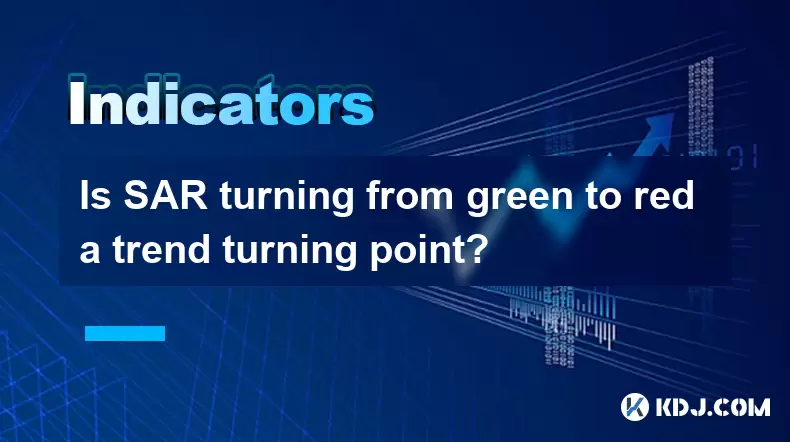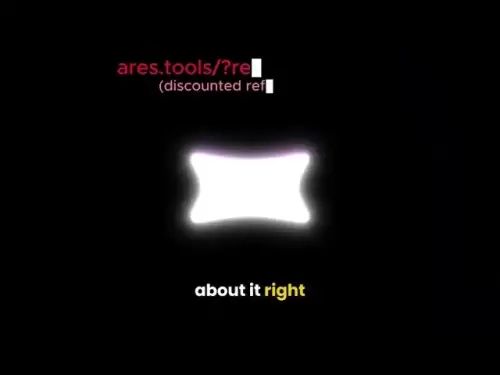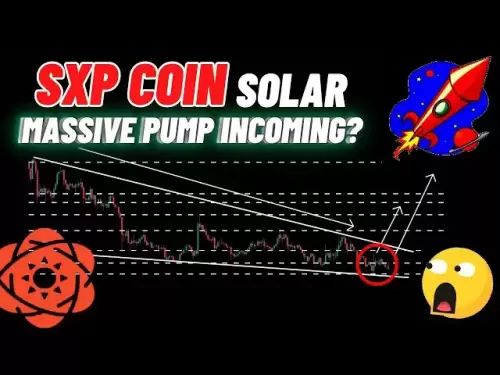-
 Bitcoin
Bitcoin $117500
2.04% -
 Ethereum
Ethereum $3759
3.02% -
 XRP
XRP $3.171
3.30% -
 Tether USDt
Tether USDt $1.000
0.03% -
 BNB
BNB $782.4
2.52% -
 Solana
Solana $187.2
5.62% -
 USDC
USDC $0.0000
0.02% -
 Dogecoin
Dogecoin $0.2380
5.26% -
 TRON
TRON $0.3175
1.07% -
 Cardano
Cardano $0.8227
4.03% -
 Hyperliquid
Hyperliquid $44.50
5.44% -
 Sui
Sui $4.020
10.07% -
 Stellar
Stellar $0.4396
6.28% -
 Chainlink
Chainlink $18.32
4.55% -
 Hedera
Hedera $0.2628
10.71% -
 Bitcoin Cash
Bitcoin Cash $554.8
4.90% -
 Avalanche
Avalanche $24.20
4.60% -
 Litecoin
Litecoin $113.7
2.31% -
 Shiba Inu
Shiba Inu $0.00001413
5.99% -
 UNUS SED LEO
UNUS SED LEO $8.984
0.11% -
 Toncoin
Toncoin $3.326
7.22% -
 Ethena USDe
Ethena USDe $1.001
0.00% -
 Uniswap
Uniswap $10.49
4.56% -
 Polkadot
Polkadot $4.092
4.02% -
 Monero
Monero $326.6
1.30% -
 Dai
Dai $1.000
-0.01% -
 Bitget Token
Bitget Token $4.570
2.49% -
 Pepe
Pepe $0.00001267
5.10% -
 Aave
Aave $297.3
3.10% -
 Cronos
Cronos $0.1344
4.10%
Is SAR turning from green to red a trend turning point?
When the Parabolic SAR flips from green to red, it signals a potential bearish reversal, suggesting sellers may be taking control—best confirmed with volume, RSI, or MACD. (154 characters)
Jul 25, 2025 at 04:21 am

Understanding the Parabolic SAR Indicator
The Parabolic SAR (Stop and Reverse) is a technical analysis tool developed by J. Welles Wilder Jr. to identify potential reversals in market price movement. It appears as a series of dots placed either above or below the price candles on a chart. When the dots are below the price, they signal an uptrend, and the color is typically displayed as green in many trading platforms. Conversely, when the dots shift above the price, they indicate a downtrend, often represented in red.
This indicator works best in trending markets and is less effective in sideways or choppy conditions. The core idea behind SAR is to help traders identify entry and exit points by anticipating reversals. Each dot represents a dynamic stop-loss level that accelerates as the trend progresses, hence the term "parabolic." The shift in color from green to red is visually striking and often interpreted as a bearish signal.
What Does a Color Change from Green to Red Indicate?
When the SAR dots transition from green to red, it signifies that the indicator has flipped positions—from beneath the price to above it. This shift is more than just a color change; it reflects a change in market sentiment. The green dots below the price suggest that buyers are in control, pushing prices upward. Once the SAR moves above the price and turns red, it implies that sellers have taken over, and the momentum may be shifting downward.
This flip is calculated based on price action and acceleration factors. The formula adjusts the SAR value each period, factoring in an acceleration factor that increases with the duration of the trend. When the price crosses the SAR level, a reversal is triggered. The visual color change is a user-friendly representation of this mechanical shift. Traders often use this signal to consider closing long positions or initiating short trades.
Is the Green-to-Red SAR Flip a Reliable Trend Reversal Signal?
While the SAR turning from green to red is commonly interpreted as a potential trend reversal, it is not infallible. The reliability of this signal depends on several factors, including the timeframe, market volatility, and confirmation from other indicators. In strongly trending markets, the SAR tends to provide timely signals. However, in ranging or consolidating markets, it can generate false signals or whipsaws.
For instance, during a brief pullback within an ongoing uptrend, the SAR might temporarily flip to red, suggesting a reversal that never materializes. This can lead to premature exits or short entries that result in losses. To mitigate this risk, traders often combine the SAR with other tools such as moving averages, RSI, or MACD. For example, waiting for the 200-period moving average to be crossed or for the RSI to enter overbought territory can increase the probability of a valid reversal.
How to Confirm a SAR Reversal Signal Step by Step
To increase confidence in a SAR color change, follow these steps:
- Observe the SAR flip: Wait for the dots to move from below the price (green) to above (red). Ensure the price candle has clearly closed below the SAR dot.
- Check the broader trend: Analyze the higher timeframe chart (e.g., daily or 4-hour) to determine if the asset has been in a sustained uptrend. A reversal signal carries more weight after a prolonged move.
- Use volume analysis: Look for an increase in trading volume during the price drop that coincides with the SAR flip. Higher volume supports the legitimacy of the reversal.
- Apply confirmation indicators: Add the Relative Strength Index (RSI) to see if it has crossed below 70 (from overbought) or the MACD showing a bearish crossover.
- Monitor candlestick patterns: Bearish patterns like engulfing candles, shooting stars, or dark cloud cover near the SAR flip enhance the signal’s credibility.
Each of these steps helps filter out noise and confirms whether the green-to-red SAR transition is part of a meaningful trend change or just a temporary fluctuation.
Practical Example: Applying SAR on a Cryptocurrency Chart
Consider Bitcoin (BTC/USDT) on a 4-hour chart. For several days, the price has been rising, and the SAR dots remain green and below the candles. On a particular candle, the price opens high but closes significantly lower, and the next period’s SAR dot appears above the price in red. This indicates a potential bearish reversal.
At this point, a trader might:
- Close existing long positions to lock in profits.
- Place a sell order just below the low of the reversal candle.
- Set a stop-loss above the recent swing high to manage risk.
- Wait for RSI confirmation—if RSI drops below 50 and continues downward, it strengthens the bearish case.
- Monitor support levels—if the price breaks below a key support like $60,000, the SAR signal gains further validity.
This real-world application shows how the SAR color change functions as a trigger, but its effectiveness is amplified when combined with structural and momentum-based analysis.
Common Misinterpretations of SAR Color Changes
Many traders mistakenly assume that every green-to-red SAR shift guarantees a downtrend. This is a flawed approach. The SAR is a lagging indicator, meaning it reacts to price changes rather than predicting them. A minor retracement in a strong bull market can trigger a red dot, misleading traders into thinking a reversal has occurred.
Another misconception is relying solely on color without checking the actual dot placement relative to price. Some platforms allow customization of SAR colors, so a red dot might not always mean a sell signal if the settings are altered. Always verify that the dot is above the price and that the price has confirmed the move by closing below it.
Additionally, in low-liquidity altcoins, price spikes and sudden drops can cause erratic SAR behavior. These assets may see rapid color changes due to volatility, making the SAR less reliable without additional filters.
Frequently Asked Questions
Can the SAR indicator be customized to avoid frequent color changes?
Yes. Traders can adjust the acceleration factor (AF) and maximum value (MAX) in the SAR settings. Increasing the step value (e.g., from 0.02 to 0.04) makes the SAR respond more slowly, reducing the number of reversals. This is useful in volatile crypto markets to avoid whipsaws.
Does the SAR work the same way on all timeframes?
The SAR functions identically across timeframes, but its sensitivity varies. On shorter timeframes like 5-minute charts, it generates more signals, many of which may be false. On daily or weekly charts, the signals are fewer but generally more reliable due to reduced noise.
What should I do if the SAR turns red but the price quickly moves back up?
This is a classic whipsaw. Exit the short position if using a stop-loss. Reassess the trend using higher timeframe structure and volume. Consider using a SAR with a longer period or combined with a moving average filter to avoid such scenarios.
Can I use SAR for take-profit levels in crypto trading?
Yes. Some traders use the SAR dots as trailing stop levels. As the price moves in their favor, the SAR follows, allowing them to ride the trend while protecting gains. When the price hits the SAR dot and triggers a color change, it can serve as an automatic exit signal.
Disclaimer:info@kdj.com
The information provided is not trading advice. kdj.com does not assume any responsibility for any investments made based on the information provided in this article. Cryptocurrencies are highly volatile and it is highly recommended that you invest with caution after thorough research!
If you believe that the content used on this website infringes your copyright, please contact us immediately (info@kdj.com) and we will delete it promptly.
- Vaultz Capital's Bitcoin Bet: A Strategic Shift on the Aquis Exchange
- 2025-07-26 20:30:12
- Pi Coin, Wallet Features, and Coinbase: What's the Buzz?
- 2025-07-26 18:30:12
- Worldcoin, Punisher Coin, and the Meme Coin Mania: What's the Haps?
- 2025-07-26 18:30:12
- Conviction, Justice System, and Murders: A Look at Recent Cases and Shifting Perspectives
- 2025-07-26 18:50:11
- Shiba Inu, Remittix, and the Market Surge: What's the Hype?
- 2025-07-26 19:10:12
- Cardano Price, ADA Holders, and Leadership Criticism: What's the Real Deal?
- 2025-07-26 19:30:12
Related knowledge

What does it mean that the rebound is blocked after the moving average is arranged in a short position for the first time?
Jul 26,2025 at 10:51am
Understanding the Short-Term Moving Average ConfigurationWhen traders refer to a 'short position arrangement' in moving averages, they are describing ...

What does it mean that the parabolic indicator and the price break through the previous high at the same time?
Jul 26,2025 at 07:22pm
Understanding the Parabolic Indicator (SAR)The Parabolic SAR (Stop and Reverse) is a technical analysis tool developed by J. Welles Wilder to identify...

What does it mean when the price rises along the 5-day moving average for five consecutive days?
Jul 26,2025 at 08:07am
Understanding the 5-Day Moving Average in Cryptocurrency TradingThe 5-day moving average (5DMA) is a widely used technical indicator in cryptocurrency...

What does it mean when ADX breaks through 25 and +DI continues to rise?
Jul 26,2025 at 07:00pm
Understanding the ADX Indicator and Its ThresholdsThe Average Directional Index (ADX) is a technical analysis tool used to measure the strength of a t...

What does it mean when the price breaks through the 60-day moving average with a large volume but shrinks the next day?
Jul 26,2025 at 06:01am
Understanding the 60-Day Moving Average in Cryptocurrency TradingThe 60-day moving average (60DMA) is a widely used technical indicator in the cryptoc...

What does the sudden rise of ADX in DMI accompanied by +DI crossing -DI indicate?
Jul 26,2025 at 01:21pm
Understanding the DMI and Its Core ComponentsThe Directional Movement Index (DMI) is a technical analysis tool used to determine the presence and stre...

What does it mean that the rebound is blocked after the moving average is arranged in a short position for the first time?
Jul 26,2025 at 10:51am
Understanding the Short-Term Moving Average ConfigurationWhen traders refer to a 'short position arrangement' in moving averages, they are describing ...

What does it mean that the parabolic indicator and the price break through the previous high at the same time?
Jul 26,2025 at 07:22pm
Understanding the Parabolic Indicator (SAR)The Parabolic SAR (Stop and Reverse) is a technical analysis tool developed by J. Welles Wilder to identify...

What does it mean when the price rises along the 5-day moving average for five consecutive days?
Jul 26,2025 at 08:07am
Understanding the 5-Day Moving Average in Cryptocurrency TradingThe 5-day moving average (5DMA) is a widely used technical indicator in cryptocurrency...

What does it mean when ADX breaks through 25 and +DI continues to rise?
Jul 26,2025 at 07:00pm
Understanding the ADX Indicator and Its ThresholdsThe Average Directional Index (ADX) is a technical analysis tool used to measure the strength of a t...

What does it mean when the price breaks through the 60-day moving average with a large volume but shrinks the next day?
Jul 26,2025 at 06:01am
Understanding the 60-Day Moving Average in Cryptocurrency TradingThe 60-day moving average (60DMA) is a widely used technical indicator in the cryptoc...

What does the sudden rise of ADX in DMI accompanied by +DI crossing -DI indicate?
Jul 26,2025 at 01:21pm
Understanding the DMI and Its Core ComponentsThe Directional Movement Index (DMI) is a technical analysis tool used to determine the presence and stre...
See all articles

























































































